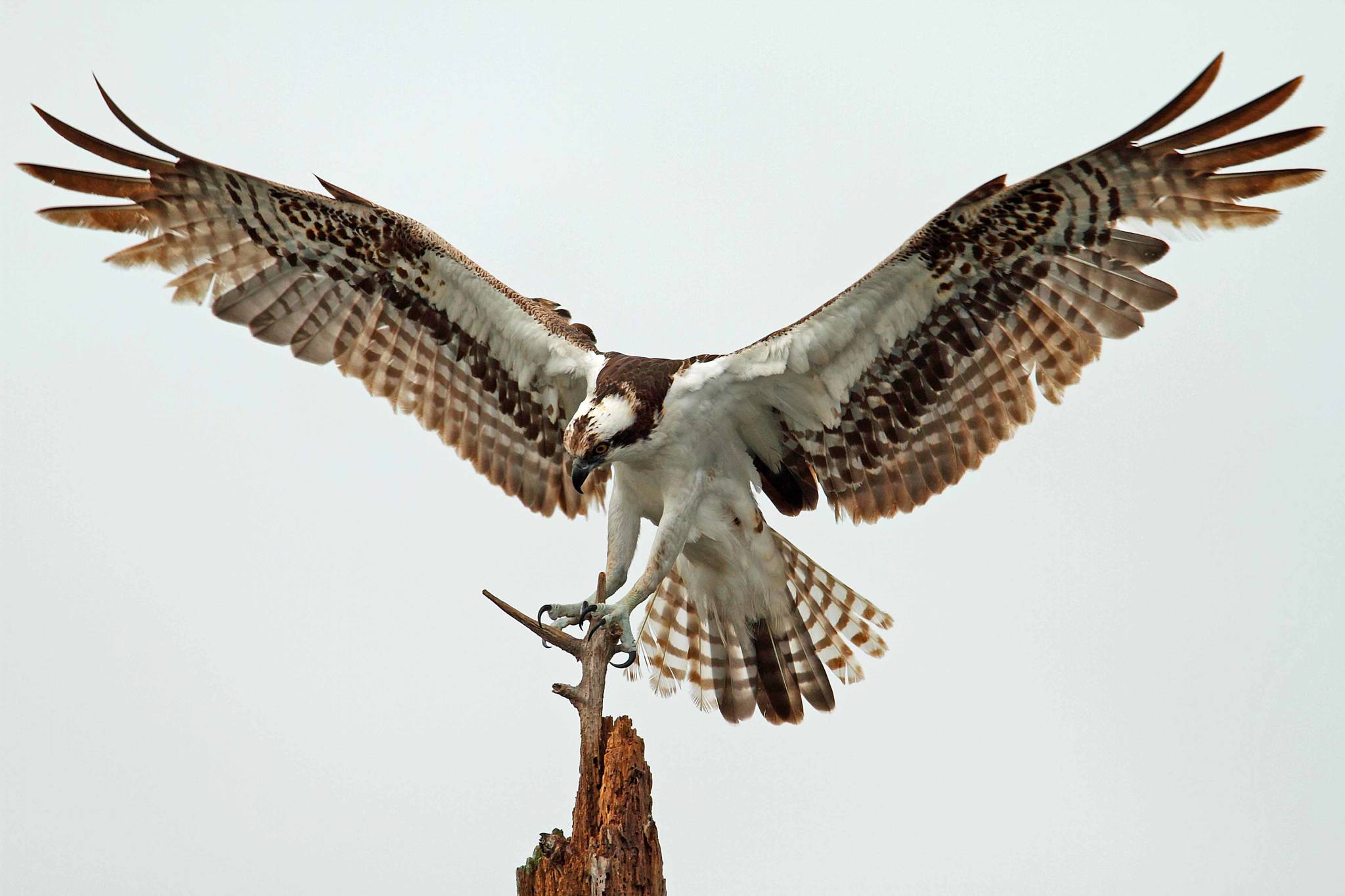By RON NEWBERRY
Special to the News-Times
Michelle Landis has worked with raptors for 25 years and is well acquainted with many types. Ospreys stand out.
“Ospreys are one of a kind,” she said. “They don’t have any good, close relatives like eagles and hawks do. They’re unique.”
Landis, who lives on Whidbey Island, gave an engaging talk about ospreys during the Whidbey Camano Land Trust’s Member Mingle event at the Coupeville Recreation Hall earlier this year. At the start of her presentation, she spoke highly of the Land Trust’s conservation efforts to protect wildlife habitat on the island, where five generations of her family have lived.
“There are parts of this island that look exactly like when I moved here in 1978,” Landis said. “I can’t think of any other place that I can say that about. We have amazing wildlife because we’re protecting all of this.”
Ospreys are one example. Though more commonly seen on Whidbey than Camano, they generally arrive in April and stay until late summer or fall before migrating south. Once in drastic decline as a side effect of pesticide use, ospreys are making a strong comeback.
Landis shared these interesting facts about ospreys:
• Ospreys have distinct features from other raptors: White head, slim build, and thin, long wings. But the most distinctive feature is the M-shaped crook in their wings while in flight. “They look like Ms when they’re flying,” Landis said.
• The osprey’s lighter frame and special wing shape allow it to lift out of water after diving to capture prey unlike bald eagles, which can’t take off from water.
• Ospreys carry fish pointed head-first, but not necessarily right-side up. “It’s aerodynamic as well as hypodynamic,” Landis said.
• Younger ospreys have orange eyes. Adults have yellow eyes.
• Feathers are scarce on ospreys’ legs to reduce drag as they dive into the water for fish. Ospreys’ feet have lizard-like scales and sandpaper-like padding that prevent prey from injuring them or escaping. “There’s no getting away from these guys,” Landis said. “Their talons are like hypodermics, they’re so sharp.”
• The Land Trust’s Crockett Lake Preserve is an excellent place to spot ospreys.
Linda Perry Dwight also spoke at the Member Mingle, describing the Whidbey Audubon Society’s plan to enhance a suitable tree on North Whidbey to provide an attractive osprey nesting site as a way of discouraging the birds from nesting on utility poles. An osprey nest-building project at the Land Trust’s Admiralty Inlet Preserve inspired the idea. Audubon will use the same tree-crown reduction technique used at the Land Trust’s preserve.
“It’s sort of a ‘build it and they will come,’” Perry Dwight said.
The Whidbey Audubon Society’s project is being funded in part through a grant from Puget Sound Energy’s Powerful Partnerships program. The Land Trust’s osprey project was funded by Land Trust members and preserve neighbors Randy Cowart and Bonnie Thie Cowart.
The Whidbey Camano Land Trust is a nonprofit nature conservation organization that actively involves the community in protecting, restoring and appreciating the important natural habitats and resource lands that support the diversity of life on our islands and in the waters of Puget Sound.
• For more information, visit www.wclt.org, email info@wclt.org or call 360-222-3310.


